Cross-dresser, transgender, genderfluid: there have been many attempts to define the identity of Charles-Genevi├©ve-Louis-Auguste-Andr├®-Timoth├®e d’├?on de Beaumont, better known as the Chevalier d’├?on (Tonnerre, 1728 - London, 1810), known for being one of the first en travesti figures in history and the first to publicly present himself as a woman, although he made it appear that he was born as a female person. The uniqueness of the Chevalier d’├?on figure, scholar Gary Kates has written, lies in the fact that he is the first case of a “public figure who successfully assumed a female identity every day for thirty years.” Born into a French family of noble ancestry, the knight (who, as mentioned, claimed in his autobiography to have been born a female and raised as a male, although he was actually a man) worked for years in the administration of the kingdom of France before becoming a spy in the service of Louis XV in 1756, and later, in 1760, a captain of the French army’s dragoons during the Seven Years’ War, in the service of Marshal de Broglie. In 1762 he was sent on a diplomatic mission to London to discuss the terms of the peace treaty, which was signed on February 10 in 1763 (for his role, Charles de Beaumont received a cash prize and knighthood in the Order of St. Louis, thus assuming the name by which he is now universally known).
In 1763 he became minister plenipotentiary in the United Kingdom (a sort of acting ambassador) only to be replaced in 1763 by the Count of Guerchy, who had become ambassador: because of disagreements with the latter and in controversy with the mother country, he decided to disobey the order to return to France. After ups and downs, the situation of the knight, who as a diplomat was in possession of secret documents (which acted as a deterrent against actions against him), was settled in 1766, when King Louis XV granted him a large pension and the knight decided to settle permanently in Britain. It was from this time that she began to live as a woman. It is not easy to reconstruct her life as a woman (but also her earlier life) because of the often conflicting versions rendered by contemporaries and biographers, because of the speculations that have taken place over the centuries, and also because of the statements made by the Chevalier d’├?on himself, and it is equally difficult to use correct definitions that are safe from discussion to identify the figure of the knight. What is certain is that the prurient rumors about him made him one of the celebrities of his time.
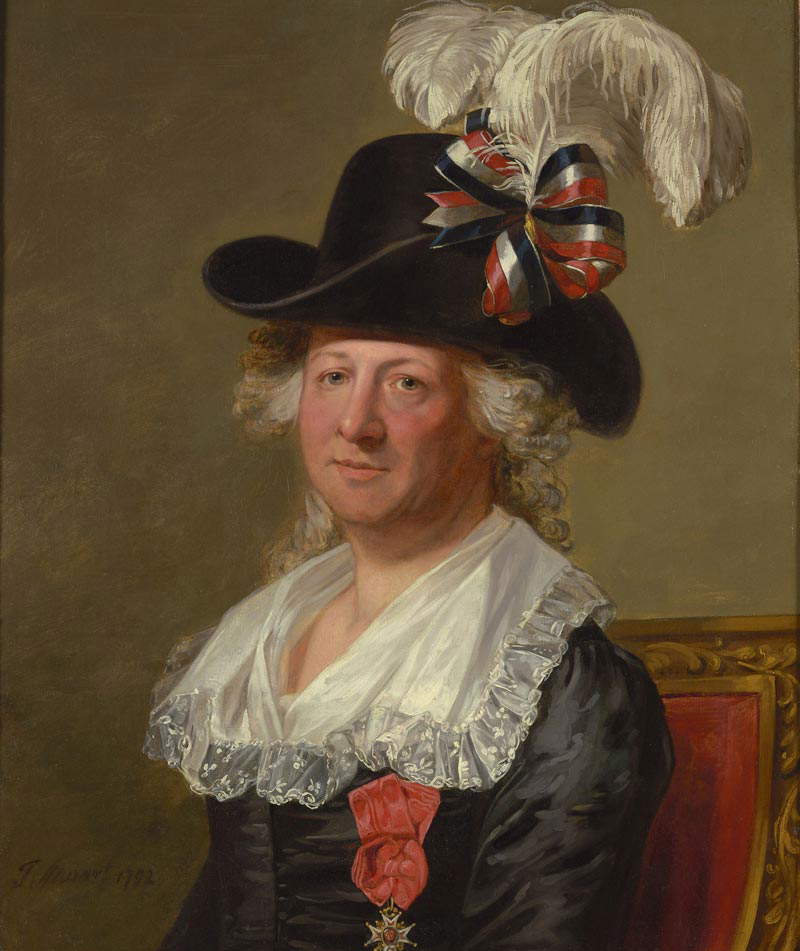
Portraits, prints, and satirical images are also preserved of the Chevalier d’├?on. The best-known work depicting him is a portrait held at the National Portrait Gallery in London, which has long been misunderstood as a portrait of a woman and caused a stir when it was acquired by the London museum in 2012. It is, according to the National Portait Gallery, an “unprecedented historical document” as early evidence of a person wearing clothing not associated with her biological sex. When the acquisition was proposed to the London institution, it was believed to be the portrait of a woman of the time: the true identity of the subject was discovered when the owner of the painting by Frenchman Jean-Laurent Mosnier from which the National Portrait Gallery work was taken, which is instead due to the hand of Englishman Thomas Stewart (c. 1766 - 1801), contacted the museum to share the information in his possession. Mosnier’s painting had been exhibited at the Royal Academy in 1791, and was purchased the following year by an Irish official, Francis Hastings Rawdon, Marquis of Hastings and Earl of Moira. The same person probably commissioned Stewart (whose signature can be read on the National Portait Gallery portrait) to make a copy of Mosnier’s original for a friend, Sir John MacNamara Hayes. Upon the latter’s death, the portrait passed from hand to hand until it was offered for sale at auction in November 2011, titled Woman with Feathered Hat and attributed to Gilbert Stuart (the signature was discovered after a cleaning).
In the painting, the Chevalier d’├?on is portrayed as a fifty-year-old man in an elegant black suit with a finely embroidered white collar, wearing a gray wig and a feathered hat with a cockade in the French colors, and the cross of the Order of St. Louis proudly pinned to his chest leaves no doubt as to his identity, further emphasized by the gray veil of beard hairs that, although perfectly shaved, are evident beneath the epidermis evidently not covered with powder to disguise masculinity. “The painting,” art historian Lucy Peltz, curator of 18th-century portraits at the National Portrait Gallery, told the Guardian at the time of the acquisition, “sheds a fascinating light on gender issues in history, and one of the reasons the gallery was so eager to acquire the portrait is that D’├?on is an incredibly inspiring figure and one of the very few historical figures of positive role models for modern LGBT audiences that the gallery can represent.” London society at the time, wrote journalist Mark Brown in the same article, was not particularly open-minded and was able to accept the knight simply because he presented himself as a woman, despite “not being the most feminine of transvestites: beyond the shaggy beard, when he climbed the stairs he unhooked his skirt and was rather rough and ungainly. None of this, however, stopped pioneering feminist writers like Mary Robinson and Mary Wollstonecraft from hailing the Chevalier d’├?on as a shining example of feminine fortitude, someone women should look up to and aspire to.”
Indeed, the Chevalier, who introduced herself as “Mademoiselle de Beaumont,” was indeed seen by many as an example (recall that everyone at the time thought she was a woman). As early as 1777, English scholar George Keate could write, in a letter to Voltaire dated August 15, that “every woman in Europe should raise an altar to d’├?on for having done so much in honor of their sex.” For Keate, d’├?on was proof that a woman can “cultivate all political arts, acquire military glory and uphold virtues even in the midst of the greatest temptations.” Of course, there was no shortage of her opponents (the noble James Boswell considered her a “monster”: “I had never before,” he wrote in 1780, “seen a woman of such absurd, masculine manners, unsuitable for her sex”). It was a shock to discover, upon his death in 1810, that the Chevalier d’├?on was indeed a man. And as a result, attitudes toward him also changed. “Nineteenth-century writers,” explains Gary Kates, “regarded him as a swindler, a con artist, the author of one of the greatest frauds in European history. In contrast, beginning in the 1930s, scholars began to assert that D’├?on was the victim of a particular psychological condition ingrained in his character from childhood, and over which he had little control.” One of the pioneers of modern sexology, British psychologist Havelock Ellis, even coined the term “eonism” to identify the attitude of men who intend to imitate women and end up identifying with a female person. Later, the term “transvestism” would begin to spread instead of “eonism.”
The sex of the knight had become a topic of interest to everyone at least by 1771, a time when portraits of him also began to spread. There are even prints in which he is depicted fencing: after the French Revolution and the fall of the monarchy, in fact, the pension that was paid to him by France was suspended and the Chevalier d’├?on was forced to invent something to replenish his income. So he began to perform in fencing matches, always in women’s clothes (after all, since 1777, the year of the publication of his autobiography, he had begun to present himself publicly as a woman), a circumstance that made him even more popular, since at the time it was an extremely rare thing to see a woman fencing. Despite his fame, however, the income was insufficient, and the Chevalier spent the last part of his life in straits: he lived together with a widow, Mrs. Coles, in utterly modest conditions and died in poverty in 1810 at the age of eighty-one.
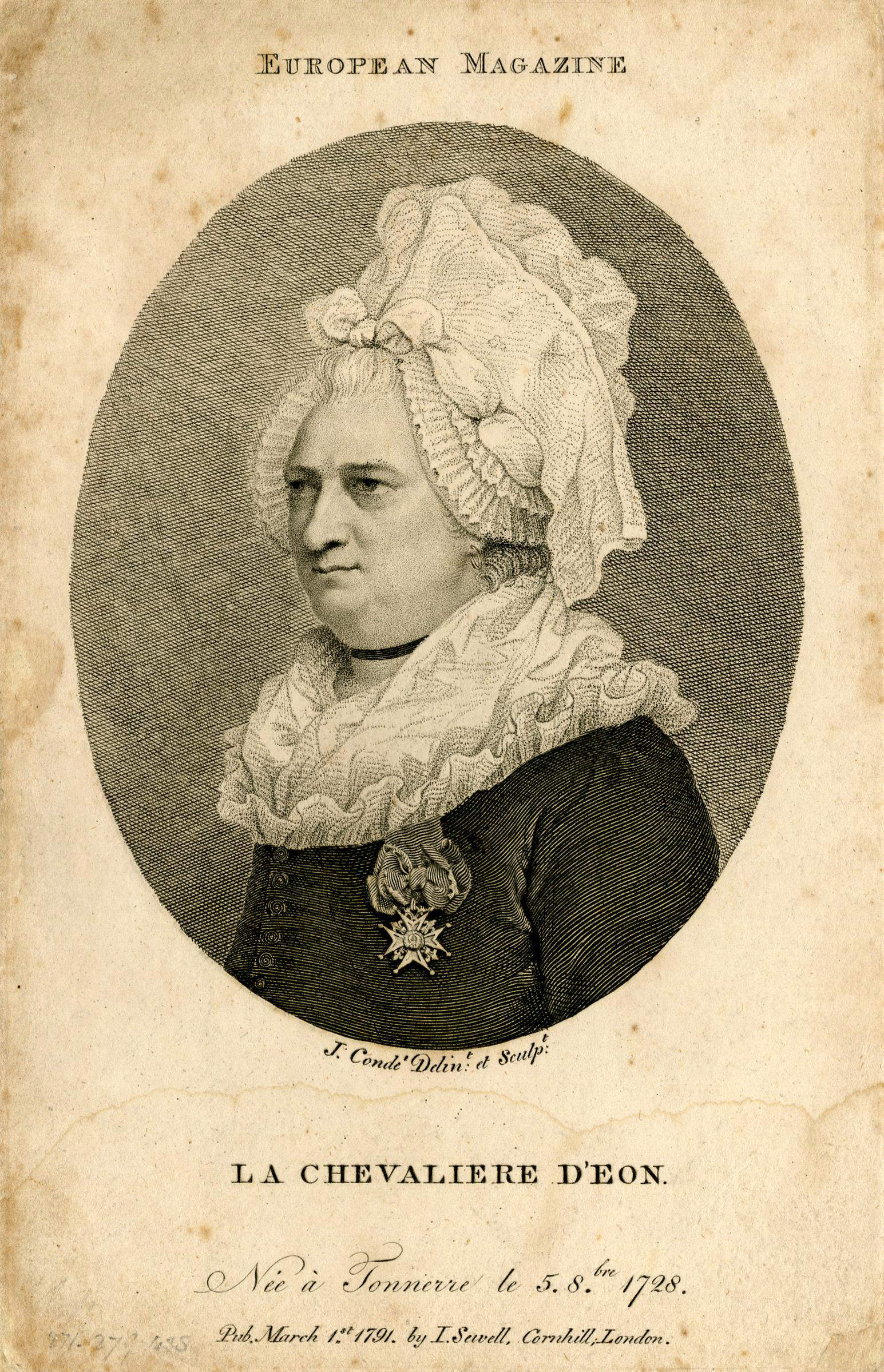
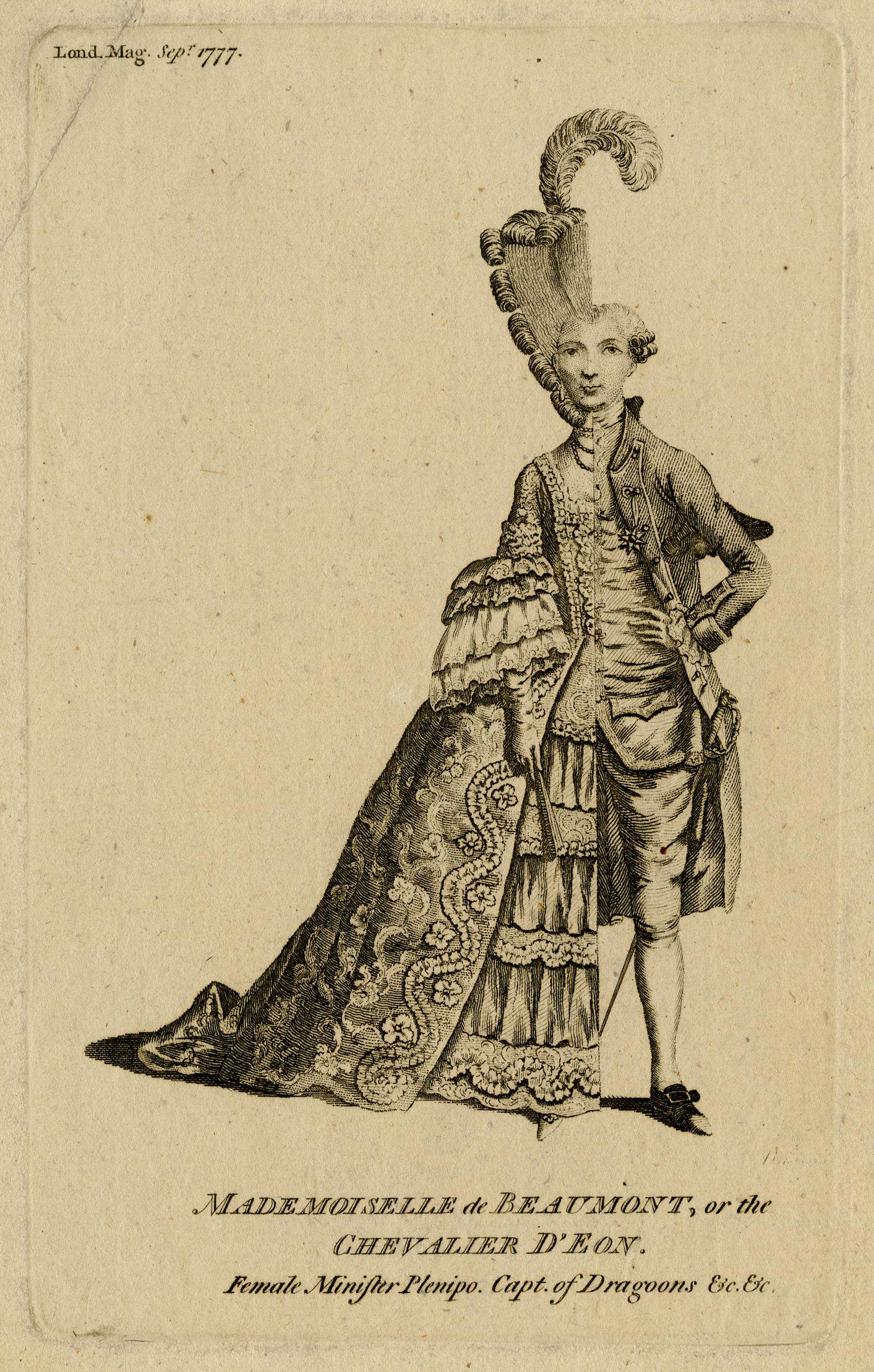
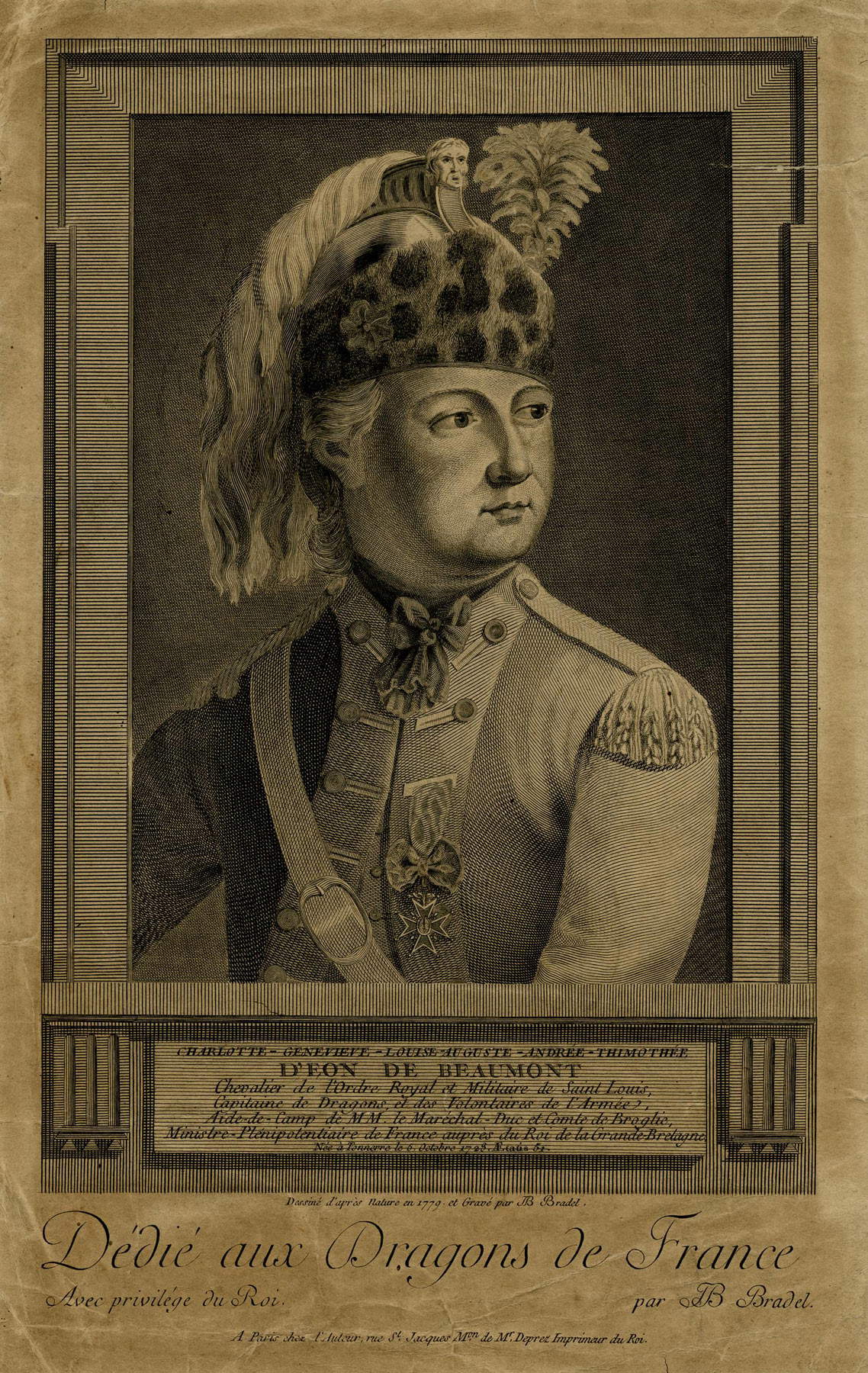
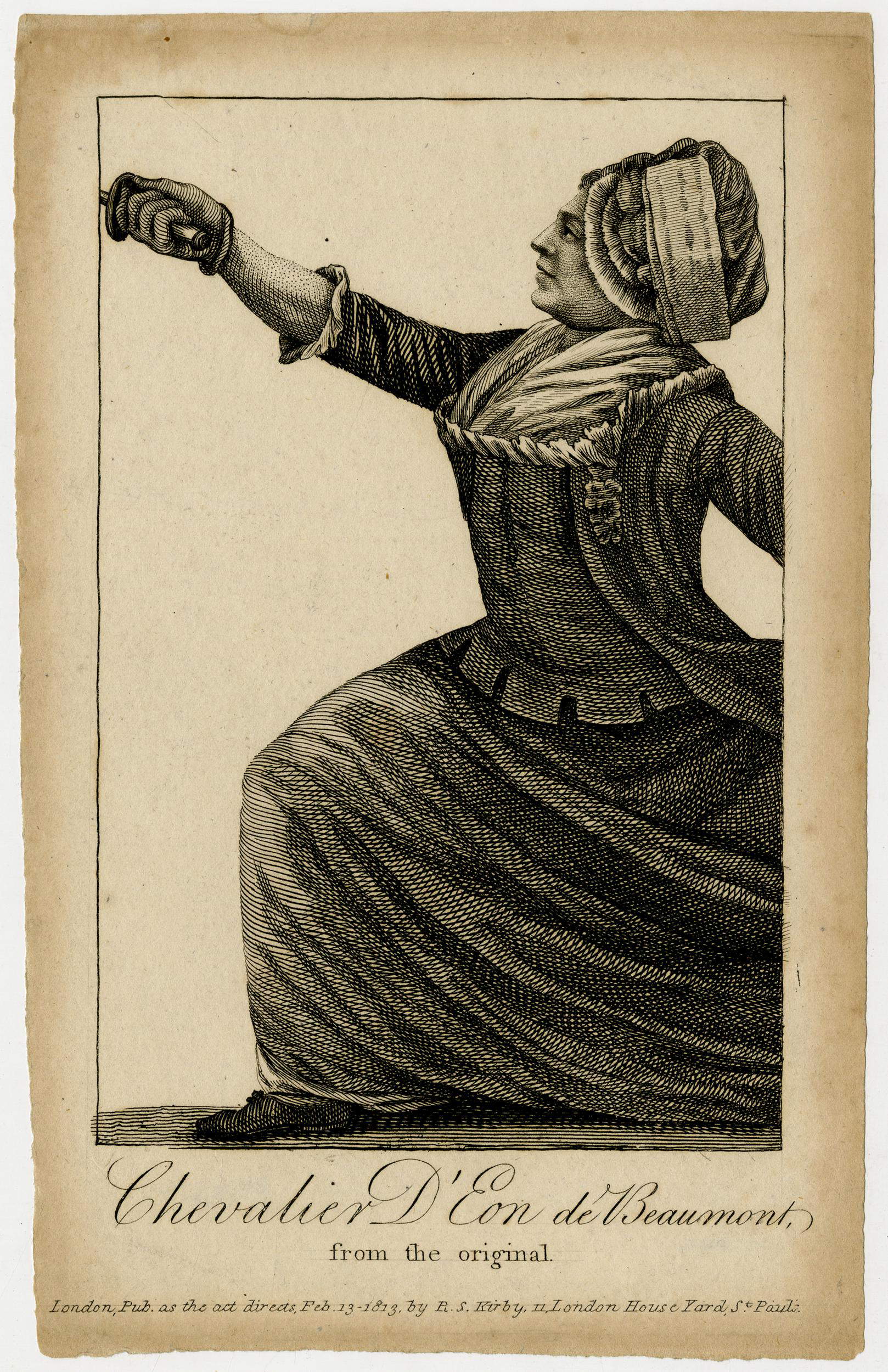
To this day we do not know for sure why the Chevalier d’├?on decided to spend half his life as a woman. The only certainty we have is that his contemporaries believed the story he gave in his 1777 autobiography, where he said he was a woman who had been educated as a male. When in fact he was the exact opposite: he was a man who presented himself as a woman. Thus, to explain her behavior, many scholars have put forward a variety of hypotheses. Some have advanced psychological or medical reasons, but these have since been discarded. Others have thought that the knight’s cross-dressing was a response to a coveted but failed political career. Kates, in his 1995 essay, first advanced the hypothesis that Knight was a thinker, a theorist, rather than a character who fell victim to a disorder discovered only after his death, and that his transition to a female identity was due to an inner crisis. His library, consisting of some six thousand volumes (a huge collection for the time), included several books that we could classify as feminist, beginning with the Discours sur les femmes published in 1768, and treatises that devoted ample space to women, such as the six-volume history of French women published by Aublet de Maubuy in the 1960s, and even the manuscript of Martin Le Franc’s Champion des dames, a proto-feminist treatise from around 1440.
And then, after his death, it was discovered that the knight had left more than two thousand manuscript pages, and in some of them the problem of gender differences is addressed from the point of view of a person who had moreover decided to set out on a Christian spiritual path. “In the eyes of men,” one of these pages reads, “I am like an aborted fetus. But in God’s grace I am what I am, and the grace I have been given has not been in vain. God gives everyone a body as he sees fit. If it is swallowed up by corruption, it will be reborn incorruptible. If it is swallowed by weakness, it will be reborn strong. If it is swallowed by horror, it will be reborn in glory.” According to the knight, there is nothing a Christian can do in the face of the body he has been granted except pray for God’s grace, and thankfully “all difference will disappear at the time of the final judgment.” And according to Knight, in God’s eyes it does not matter whether someone lived as a man or a woman. “Sex differences are irrelevant to salvation. It is written that ’God has no problem with people’s appearance.’” According to Kates, in short, the Chevalier was reading St. Paul filtered through the ideology of the querelle des femmes that animated philosophical debates at the time. And since the Chevalier d’├?on believed that gender had no meaning for God, similarly it should have no meaning for Christians, who driven to imitate Christ should therefore ignore differences even in the body. In light of this, there would be no problem if a man decided to live as a woman, or vice versa. For Kates, the path of the knight would thus be that of a man being reborn in the Christian faith in the guise of a woman, since the Chevalier d’├?on believed that female persons, moreover, were less prone to sin than males (this is because, according to the knight’s mentality, men, in their race for political power, military authority and the accumulation of material goods, had more opportunities to be tempted). The unique features of her thought are thus due, Kates wrote, to this particular co-presence of fervent Christian ardor and militant feminism. And his transformation “must be seen as part of a midlife moral and spiritual crisis caused by his political status as an exile in London [...]. In short, d’├?on became a woman to regenerate his lost virtue.”
Finally, in one of the most recent studies, historian Marilyn Morris, in her 2018 essay The Chevali├©re dEon, Transgender Autobiography and Identity, referring to the character with the noun “chevali├©re” (thus feminine), pointed out that there is evidence that the knight had disguised himself as a woman even before 1777, and that that had indeed become his status. In fact, according to Morris, we know too little about Chevalier d’├?on’s gender identity to draw any conclusions: “we will never know for sure whether Chevalier truly believed she was a woman or was persuaded that her parents had raised a girl as a boy,” Morris writes. “We do know that she managed to write a transgender narrative that at least reveals the way she wanted to be remembered. However, some worry that the designation of transgender, as well as queer, is in danger of becoming so broad and all-encompassing that it runs the risk of becoming meaningless. I think it is useful, however, to cast the net broadly and capture the full range of gender identities in order to appreciate the shifting cultural forces that people with gender variants have had to negotiate throughout history.”
Today, however, the Chevalier d’├?on is seen as a forerunner of the transgender community, so much so that one of the main British resources supporting people in this community is called the Beaumont Society in his honor. The Chevalier d’├?on, wrote Anna Clark, “could be seen as a person who revealed his true feminine self after seeing himself trapped in a body born biologically male.” But it is also true that the knight did not intend to appear as a woman with feminine ways and did not behave according to the conventions that the 18th century ascribed to women, so much so that he even continued throughout his life to wear his military decorations and carry his sword. Rather than a transformation from one gender to another, then, can the knight’s affair be labeled as one of the first known cases of gender fluidity? The personality of this singular eighteenth-century figure still has many sides to investigate.
Warning: the translation into English of the original Italian article was created using automatic tools. We undertake to review all articles, but we do not guarantee the total absence of inaccuracies in the translation due to the program. You can find the original by clicking on the ITA button. If you find any mistake,please contact us.